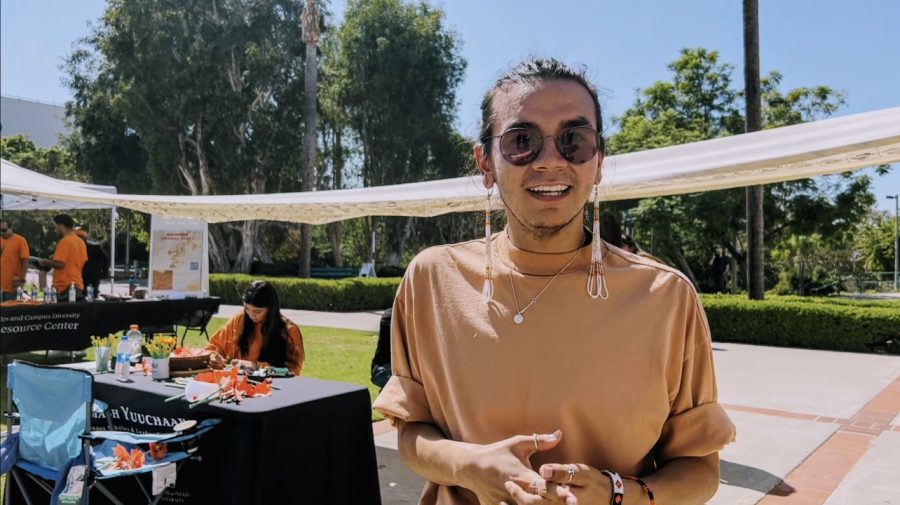On Sept. 30, the Native Resource Center (NRC) hosted Orange Shirt Day.
A survivor of the residential boarding schools, Phyllis Jack Webstad, created Orange Shirt Day in Canada to honor the Indigenous children who died when attending these Indian boarding schools.
According to the University of British Columbia, the orange shirt symbolizes a shirt that Webstad’s grandmother gave to her when she was six years old.
This event brought students together to gain new experiences through artistry and inspirational designs that made students who participated feel happy and enlightened.
The NRC installation of this event commemorated 60,000 children with a banner that had 4,000 stamps to resemble the students at the boarding schools and subsequent generations. The names on the banner led a visible trail from Hepner Hall to Aztec Walk.
Indigenous students experienced malnourishment and neglect while attending the boarding schools colonized and run by Canadians from the 1880s to the 1900s. The schoolchildren were separated from their families and forced to hide their cultural heritage and backgrounds.
Assistant Director of the NRC Jen Clay had an idea to create footprint stamps to honor the children who experienced harsh acts and events such as fires, drowning, suicidal attempts, diseases, and dangerous accidents.
Gabriela Kovats Sánchez, a faculty scholar, spoke about their objective of bringing attention to the amount of children impacted by the damaging history.
“The idea was to represent the number of students that were impacted by the boarding schools,” Sánchez said. “Our goal is to help people visualize the amount of children that have been impacted by the harmful and violent history.”
The NRC also provided flyers and paper flowers to show condolences for the children.
Assistant Coordinator of the NRC, Mateo Gin Tarango, expressed the importance of hosting Orange Shirt Day.
“Events like this are impactful for students because the education system in the United States (and other colonial countries) fail to acknowledge and teach us about the realities this country was built on,” Tarango said. “Having an art piece that honors that truth, even though it’s a really hard and traumatic truth, is impactful because it holds a space (for people) to acknowledge that it happened.”
Learn more about the Native Resource Center and its events on Instagram @sdsunrc and its Indigenous Scholars & Leaders program @elymashyyuuchaap.







